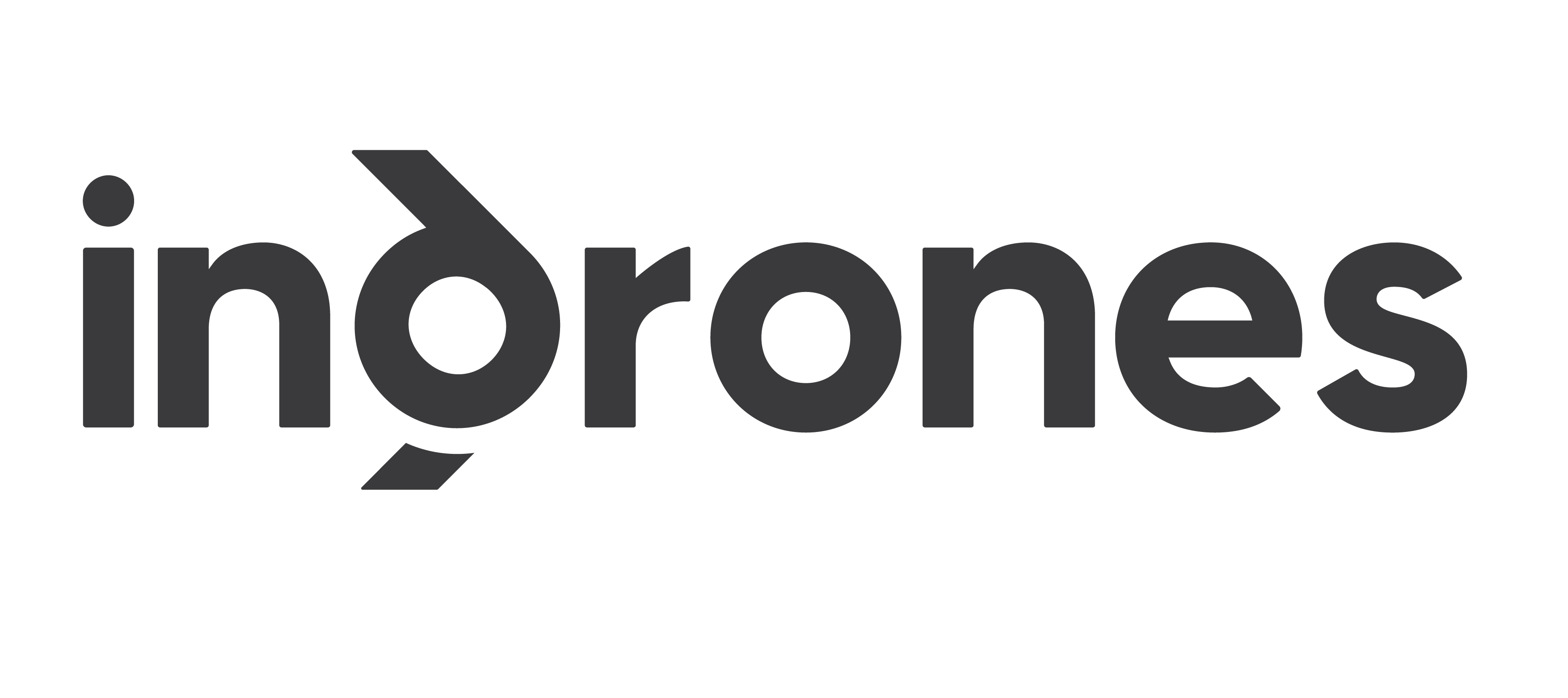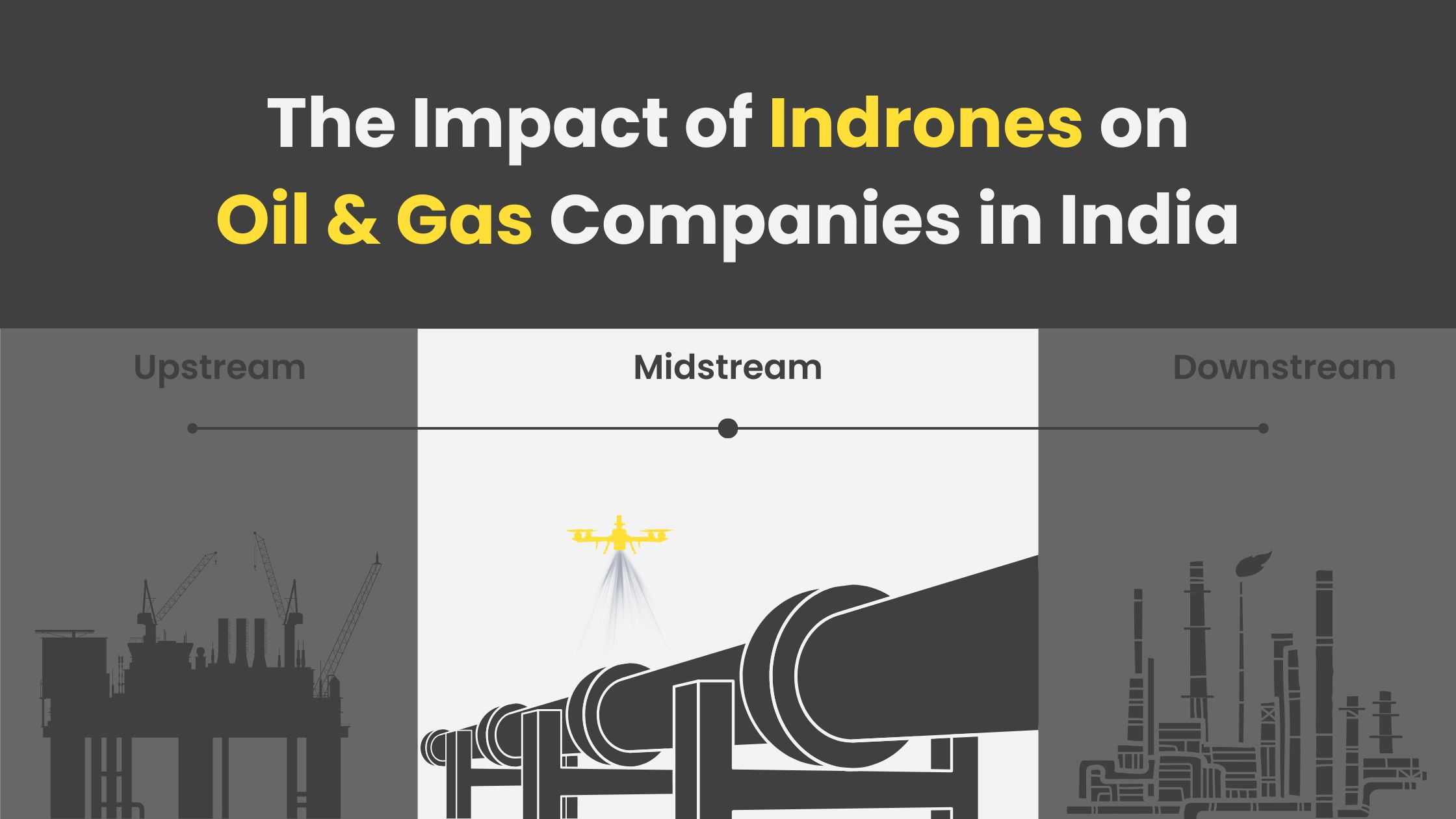Oil & Gas | January 2025
How Drone Technology is Streamlining Oil & Gas Sector in India
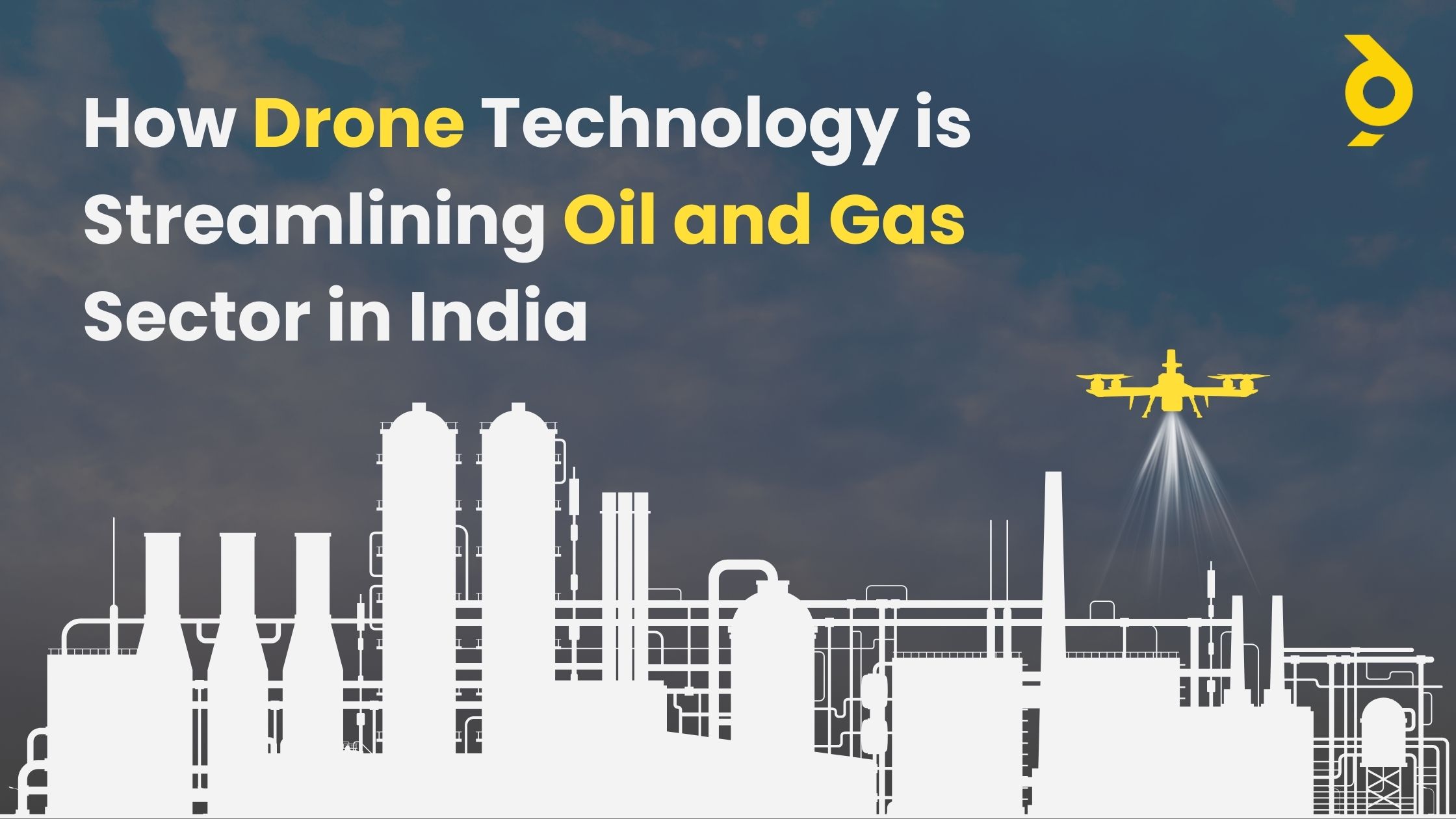
Introduction
Oil and gas companies in India are embracing drone technology to address challenges across its upstream, midstream, and downstream operations. Indian energy sector’s needs are majorly met by fossil fuels, the industry faces mounting pressure to optimize efficiency, reduce environmental risks, and ensure worker safety. Drones—equipped with AI, IoT, and advanced sensors, are emerging as advanced source, offering tailored solutions for each segment of the value chain.
From exploration in remote terrains to refinery maintenance in urban hubs, here’s how drones are transforming India’s oil and gas ecosystem.
Enhancing Efficiency in Exploration and Production
The Indian upstream sector, which focuses on oil and gas exploration and extraction, often operates in harsh and remote environments—ranging from offshore rigs to dense forests and arid deserts. Drones are streamlining this segment by offering rapid data collection, real-time monitoring, and enhanced safety measures.
Advanced Site Surveys and Exploration: Drones equipped with LiDAR and multispectral sensors generate high-resolution 3D maps, enabling faster and more accurate land assessments. For instance, in the Barmer Basin, drone-based surveys have accelerated exploration processes significantly, reducing both manual labor and costs.
In ecologically sensitive areas like the oilfields of Northeast India, drones play a crucial role in conducting environmental impact assessments. By tracking changes in vegetation and wildlife, they help ensure compliance with regulatory standards while minimizing ecological disruption.
Efficient Infrastructure Inspections: Oil platforms in the Arabian Sea face constant wear due to harsh marine conditions. Drones equipped with high-resolution cameras and thermal imaging sensors inspect these structures, identifying corrosion, cracks, and other potential hazards—eliminating the need for risky manual inspections.
In key oil-producing regions like Gujarat, AI-powered drones conduct routine wellhead inspections, detecting gas leaks or mechanical failures in real time. This proactive approach helps prevent costly shutdowns and enhances overall operational safety.
Strengthening Safety and Emergency Response: With India’s commitment to cutting methane emissions by 50% by 2027, drones equipped with advanced gas sensors are being deployed to monitor and detect methane leaks at extraction sites. This ensures early intervention, reducing environmental impact and enhancing sustainability efforts.
In emergency situations like well blowouts or oil spills, drones provide real-time aerial footage, enabling authorities to coordinate evacuation efforts and containment strategies efficiently. Their ability to operate in hazardous conditions makes them indispensable for crisis response teams.
Enhancing Pipeline Safety and Logistics with Drones
The midstream sector, which involves the transportation and storage of oil and gas, depends on an extensive pipeline network and large storage facilities. Drones are playing a crucial role in improving pipeline monitoring, storage tank inspections, and logistics management, ensuring operational efficiency, regulatory compliance, and safety.
Pipeline Monitoring: Drones equipped with Optical Gas Imaging (OGI) sensors provide real-time surveillance of pipelines, enabling early detection of leaks. This technology has been deployed across India’s midstream oil transport network, reducing the time required for leak detection by 20% compared to manual methods. In Assam, for instance, drone-based inspections have led to a reduction in spill risks in pipelines running through tea estates.
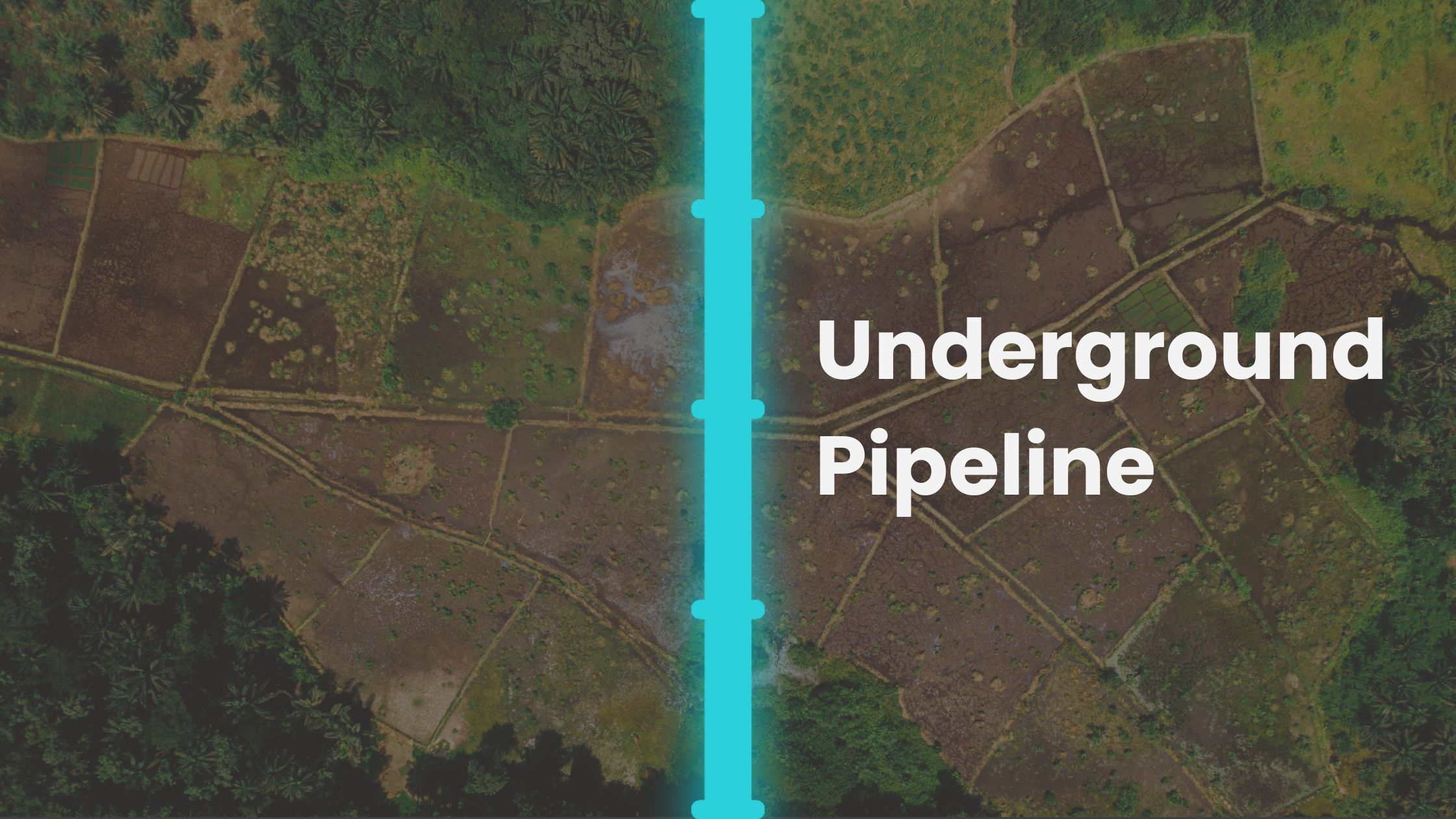
Figure 1 : Pipeline Monitoring
In addition to leak detection, drones fitted with thermal imaging cameras help identify corrosion and structural weaknesses in hard-to-reach sections of pipelines. This proactive approach allows operators to conduct timely maintenance, reducing the likelihood of failures and costly repairs.
Storage Tank Inspections: Traditional storage tank inspections often require human entry into confined spaces, posing significant safety risks. Drones eliminate this hazard by capturing high-resolution, 360-degree imagery of internal surfaces, allowing for detailed structural assessments without human intervention.
Furthermore, drones are being used for aerial inventory management, providing accurate data on storage levels and automating audit processes. This reduces human errors and enhances operational efficiency within storage facilities.
Logistics Optimization: Drones are also being utilized for pipeline route planning by surveying terrain and identifying optimal pathways. This helps in avoiding ecologically sensitive zones and minimizing disputes over land acquisition, ensuring smoother project execution.
Additionally, night-vision drones provide continuous security surveillance over remote pipeline stretches. In regions like Rajasthan, where pipelines often pass through isolated areas, these drones play a critical role in preventing theft and sabotage, enhancing asset protection.
Enhancing Refinery Operations and Distribution Efficiency
The downstream petroleum industry, which includes refining, distribution, and retail, requires high precision, strict safety measures, and compliance with environmental regulations. Drones are emerging as essential tools in streamlining refinery inspections, ensuring regulatory adherence, and optimizing fuel distribution.
Refinery Inspections: Routine inspections of refinery infrastructure, such as flare stacks and chimneys, are critical for preventing operational disruptions. Drones equipped with thermal imaging cameras can safely inspect these high-risk areas, identifying overheating, blockages, or structural issues. Refineries in Jamnagar, for example, are leveraging drone technology to enhance maintenance efficiency and reduce downtime.
Additionally, LiDAR-equipped drones are being used to create digital twins of refinery units. These high-precision 3D models allow engineers to simulate repairs, assess structural integrity, and predict equipment failures, leading to proactive maintenance and improved asset management.
Environmental Compliance: With increasing regulatory scrutiny, refineries must monitor emissions to comply with India’s National Clean Air Programme (NCAP). Drones equipped with gas analyzers provide real-time monitoring of sulfur dioxide (SO₂) and nitrogen oxide (NOx) emissions, helping facilities ensure compliance with environmental standards while minimizing air pollution.
Drones also play a crucial role in spill response during refinery accidents. By quickly mapping affected areas and assessing the extent of contamination, drones guide cleanup teams with real-time data, enabling faster and more effective containment measures, thereby reducing ecological damage.
Retail and Distribution Optimization: Ensuring the safety of fuel depots is a key priority in downstream operations. Drones conduct depot safety inspections, identifying potential hazards such as improper storage of flammable materials, leakage risks, or structural issues, allowing for timely intervention.
In fuel distribution, drones enhance last-mile delivery monitoring by tracking fuel trucks in remote areas. This prevents pilferage, improves route efficiency, and ensures timely fuel deliveries, optimizing supply chain management in regions with challenging logistics.
Indrones has played a crucial role in enhancing oil pipeline monitoring for major Oil & Gas companies in India. With over 8,000 km of linear asset monitoring completed, our work primarily focuses on the midstream segment, where we specialize in monitoring underground pipelines through mapping, video surveillance, and digital twin technology.
One of the biggest challenges in the Oil & Gas sector is ensuring the safety and integrity of assets, which are often at risk due to encroachments, vegetation growth, and unauthorized construction. Monitoring for elements like trees, new structures, burnt ground, and soil discoloration is critical to detecting potential threats early.
Indrones' end-to-end drone solutions automate this process by collecting high-resolution data, enabling efficient analysis, reporting, and visualization through our Eigenspace software suite. This ensures that key stakeholders receive accurate insights in real time.
In pipeline management, efficiency and safety are paramount. Traditional monitoring methods often face limitations, but drones streamline right-of-way inspections, making it easier to detect:
a) Encroachments – Unauthorized construction, vegetation growth, and land use changes.
b) Pilferages – Identifying illegal tapping and security threats.
c) Operational Hindrances – Detecting obstructions that could affect pipeline functionality
d) Soil Discoloration – A key indicator of potential oil leaks
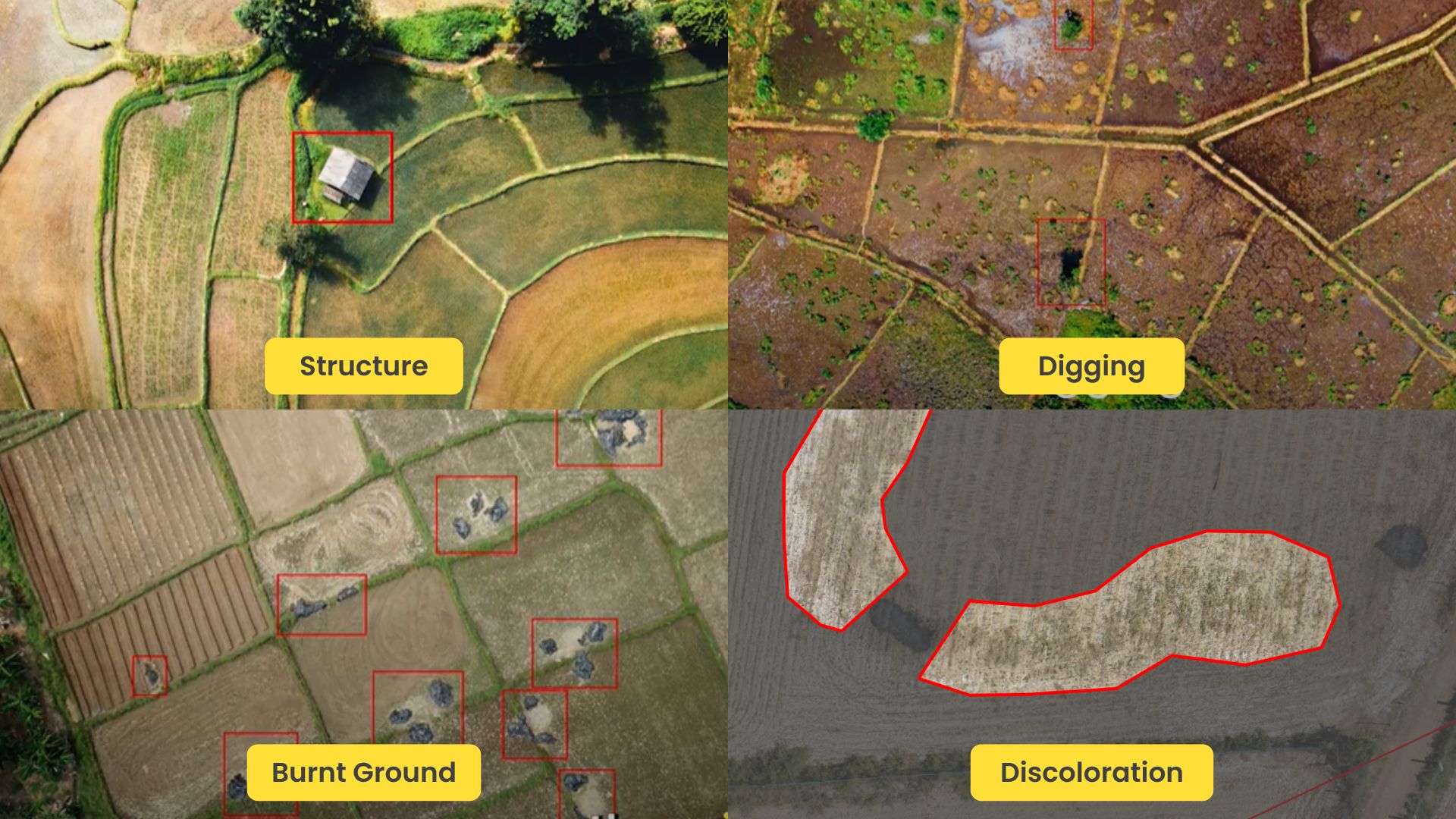
Figure 1 : Detections via Drones
With AI-driven object detection, our drones ensure that no detail goes unnoticed. The collected data is further utilized to create a digital twin of pipeline networks, allowing companies to visualize their assets in a comprehensive manner. This digital model enables predictive maintenance, helping companies act before issues escalate.
Conclusion
Drone technology is streamlining India’s oil and gas sector by enhancing efficiency, safety, and compliance across upstream, midstream, and downstream operations. From improving exploration and production with advanced site surveys to streamlining pipeline monitoring and refinery inspections, drones provide real-time data and AI-driven insights. With government initiatives supporting adoption, drones are set to become an industry standard.
Indrones plays a key role in this transformation, offering tailored solutions like pipeline surveillance and digital twin technology, empowering companies to enhance operational efficiency, reduce risks, and ensure regulatory compliance while contributing to sustainability goals. Feel free to reach out to us if you need assistance.
Pipeline Monitoring by Indrones
